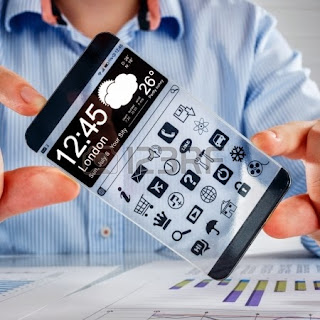A recent report by Yahoo’s Flurry Analytics unit shows that phablet usage is growing dramatically.
For the purposes of looking into this further, it helps to categorize phablets and differentiate them from smartphones.
Flurry looks at usage data in the following categories:
Phablets are essentially a larger phone or a smaller tablet with cellular radio capability.
While there are smaller 8 inch tablets like the iPad Mini and Samsung Galaxy Tab 8 that sport cellular capability, the phablet definition is limited to screen sizes under 7 inches — perhaps that being the limit of how ridiculous it looks to put such a device to your ear to use as a phone.
The report noted that phablets usage has more than tripled over the past two years, growing from 5% to 20% of active devices.
Most of this growth appears to come at the expense of medium-sized phones (3.5 to 4.9 inches). Flurry’s numbers are based on the 1.6 billion devices that it claims it tracks, its analytics capabilities being integrated into some 540,000 apps.
The company has been in the mobile analytics space since 2005 and was purchased by Yahoo in July 2014 for an estimated $240 million.
Samsung ignited the phablet segment with the introduction of the original Galaxy Note in 2011. That model had a 5.3-inch screen, which was gigantic for a phone at that time.
While somewhat derided at first in the US as not really a phone, it has proven popular in all markets around the world, selling 50 million devices in the first two years.
It has spawned many competitors, and now the flagship phones from Samsung, LG, Microsoft’s Nokia, Sony, OnePlus One, and others are all in the phablet size range.
Apple jumped into the fray last fall with the introduction of the iPhone 6 Plus, and it has also been hugely popular.
Phablets have been most popular in Asia, where people tend to use them as their one device for both phone capabilities and their portal to the Internet.
In the second quarter of 2013, research firm IDC reported that phablets shipments were double that of tablets and laptops in the Asia Pacific region.
In high growth markets like India, phablets account for more than 30% of all smartphone sales, and tablet sales are declining.
We can slice and dice the numbers all day long, but what does it really mean?
In the end, phablets are just another form factor. They are popular because they offer distinct advantages.
As we rely more on our devices that are always with us for all sorts of information and communication, for a great number of people the larger screen size is simply easier to read and use for most apps.
While not everyone wants to carry a device with a 6-inch screen around, and one handed use may not be easy, the increased screen size – especially with today’s high resolutions – make for a better experience for many.
And while holding a large phone to the ear may be awkward, there are many Bluetooth headsets and speakers, as well as nearly ubiquitous Bluetooth in cars that mitigate that. More significantly, voice, while still important, is no longer the killer app in mobile devices.
The phablet will likely most cannibalize small tablet sales. There is a fair amount of overlap there. If you have 5.5-inch phablet, is a 7-inch tablet that much of a step up in screen?
The numbers already show a decrease in sales in that tablet size. But there is still a big difference in a 5.5-inch versus a 9- or 11-inch tablet screen, and apps can be optimized for both and offer different experiences.
As far as laptops, they will continue to decline overall, as tablets will cannibalize more of casual use for Internet browsing, apps, and content consumption.
But they won’t go away, any more than desktops have gone away.
Clearly the mix of devices we use has changed and will continue to evolve. As technology enables certain capabilities in new form factors that are smaller, lighter, more portable, longer lasting (batteries), and so on, then people shift their habits and device usage.
We should expect the same with wearables. As wearables get more sophisticated, for example, adding GPS and cellular capability, some of those will replace certain smartphone sales. In the end, it’s just another phase of the evolution of computing we’ve been experiencing for the past 50 years.
What does it mean from the point of view of the major ecosystems? Given Android’s openness and availability to device manufacturers, Android phablets dominate in the market.
There are countless (well, OK, many) phablet devices available, versus just one iPhone phablet. But that dominance has not translated to larger tablets (yet), where Apple still holds a 36% share of the market (in shipments) and a larger share of the revenue and profit.
BlackBerry is no longer a player at this point, and it remains to be seen what Microsoft and Windows 10 does in mobile devices going forward. One might surmise that Apple might want more of a budget phablet, especially to capture additional market share in Asia.
Nokia had a 6-inch phablet and one would think Microsoft is not going to be left out in that segment in the future.
It’s difficult to say what will happen in the future by just extrapolating from today’s trend. New technologies – like folding screens – might create entirely new categories of mobile devices. We may be talking about foldiphablets in five years.




No comments:
Post a Comment